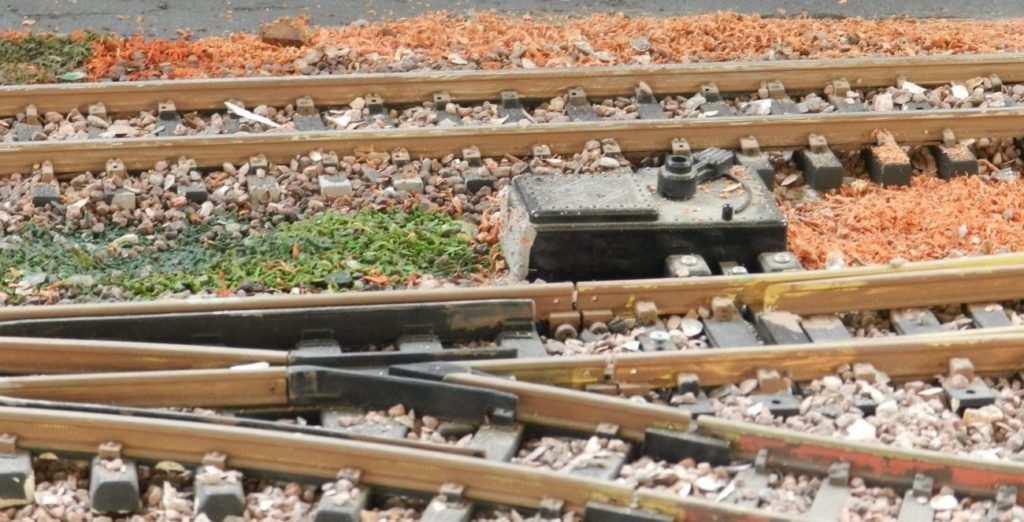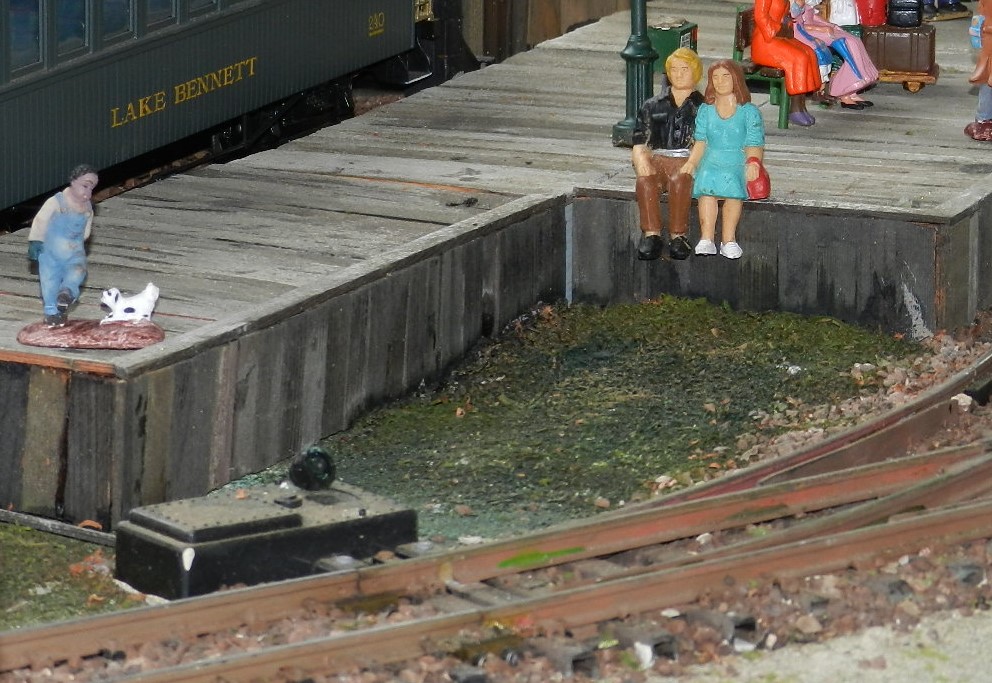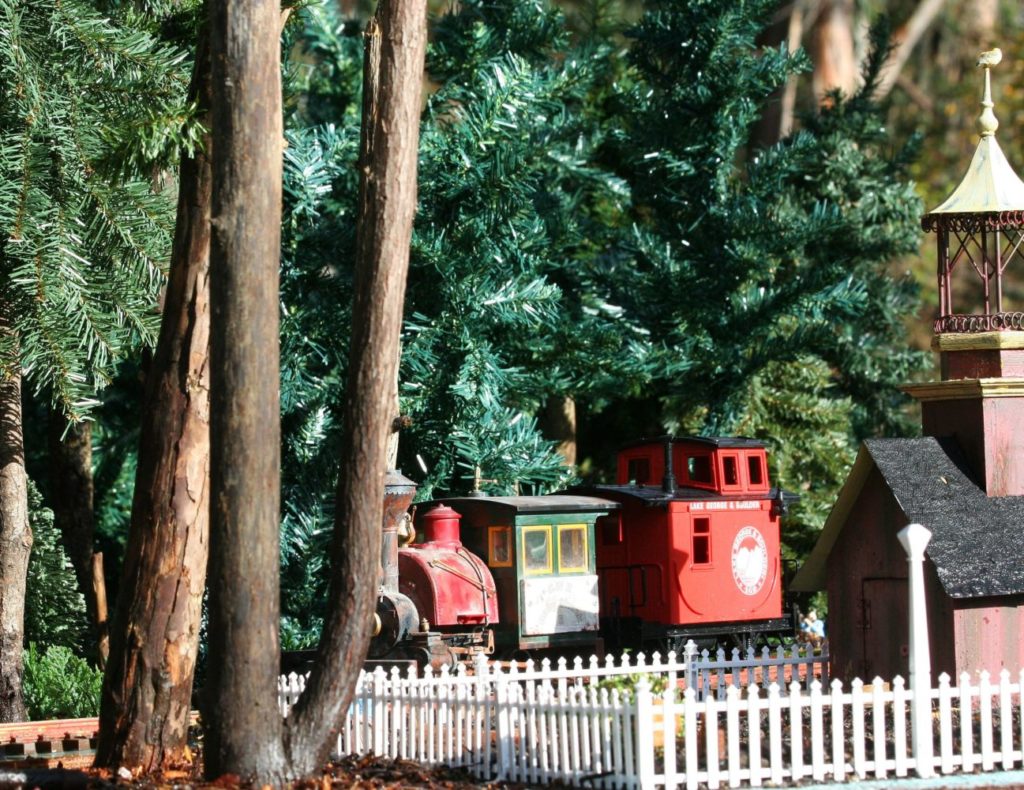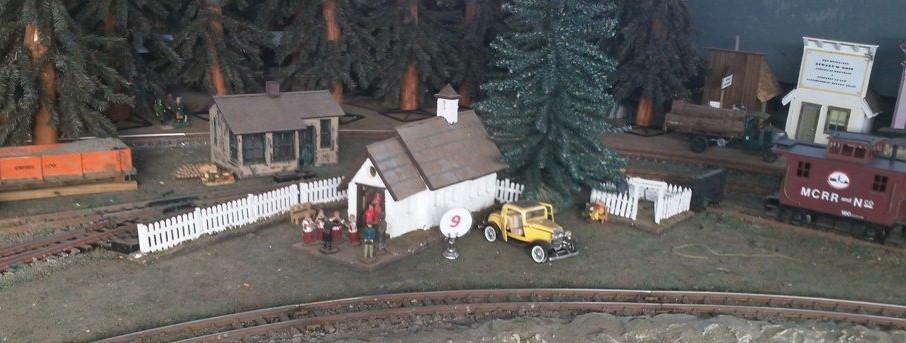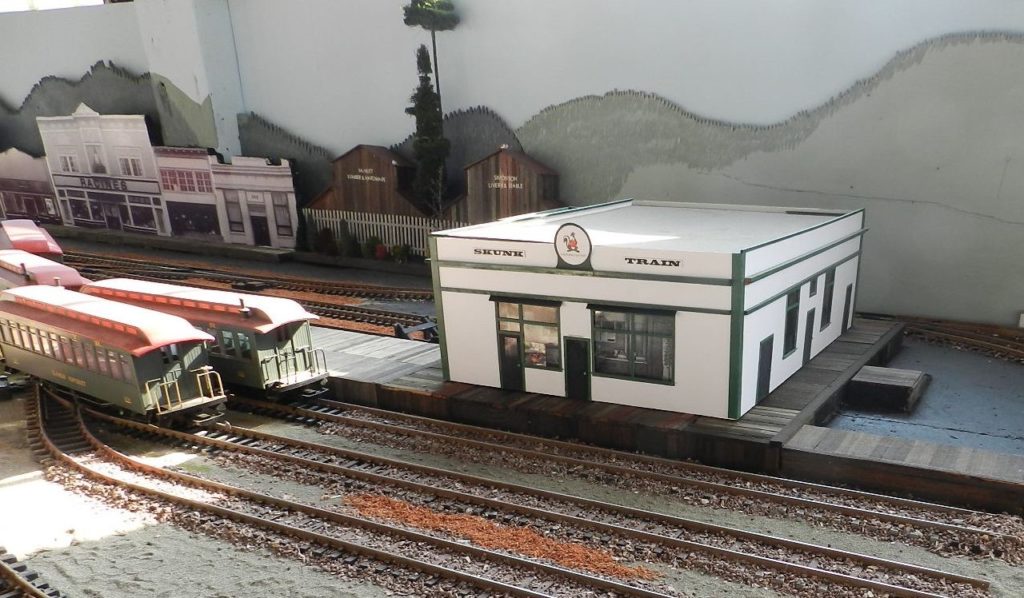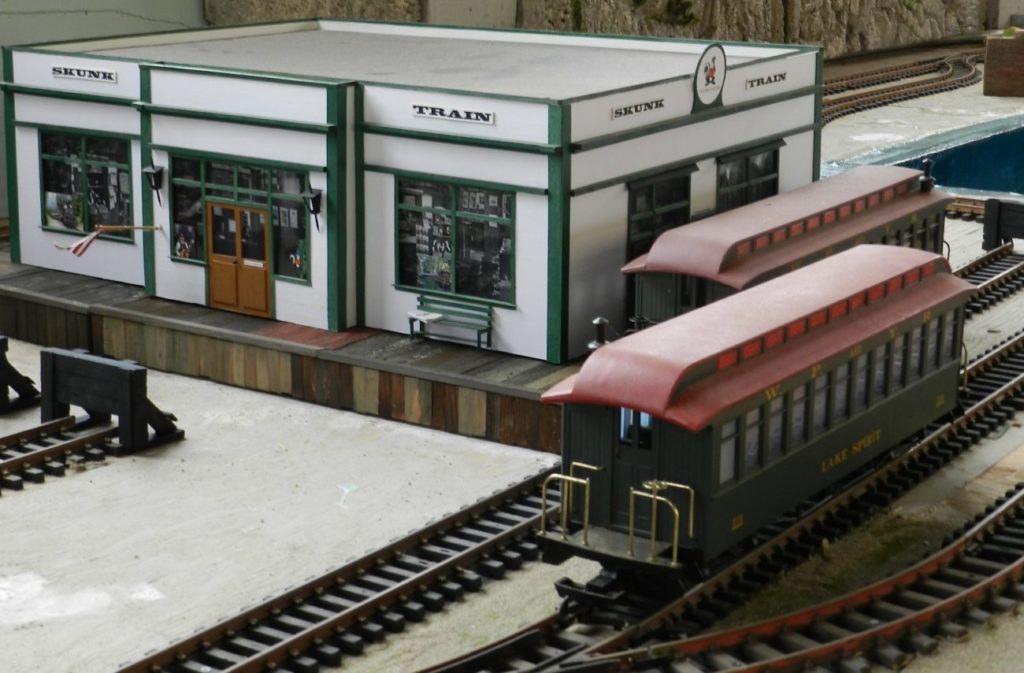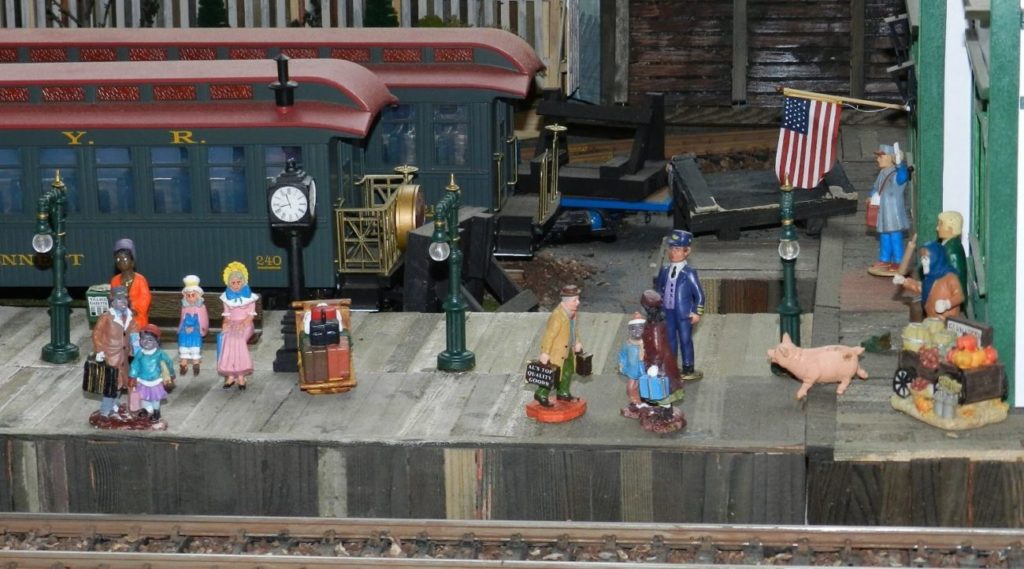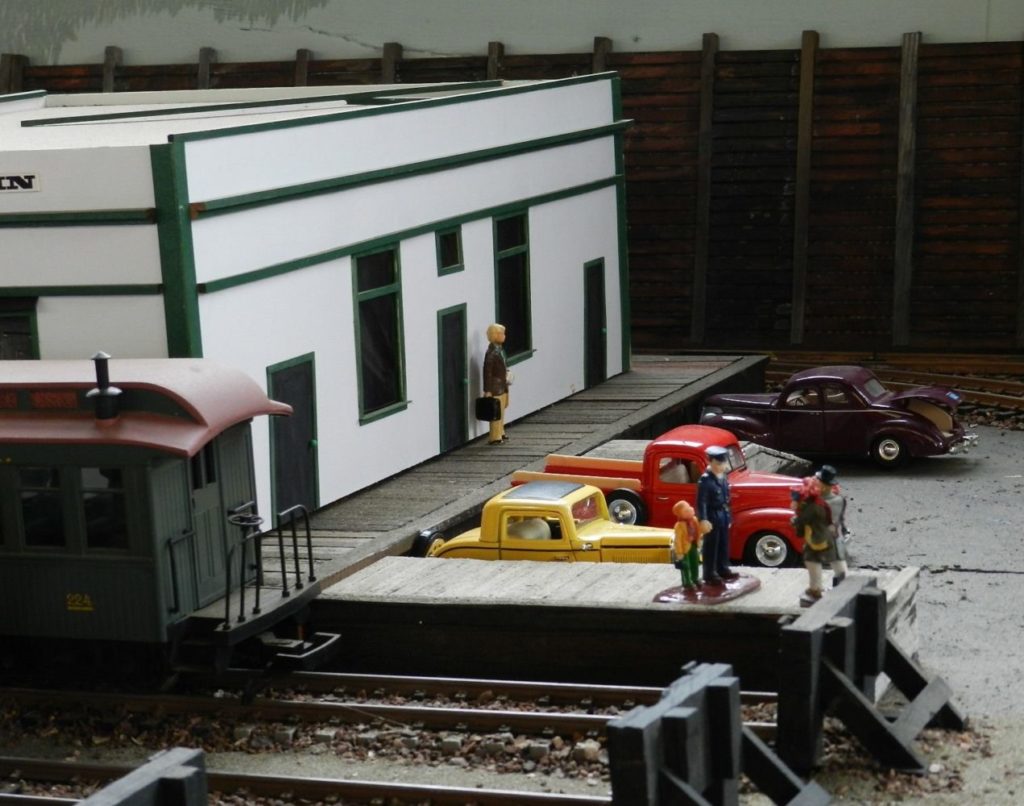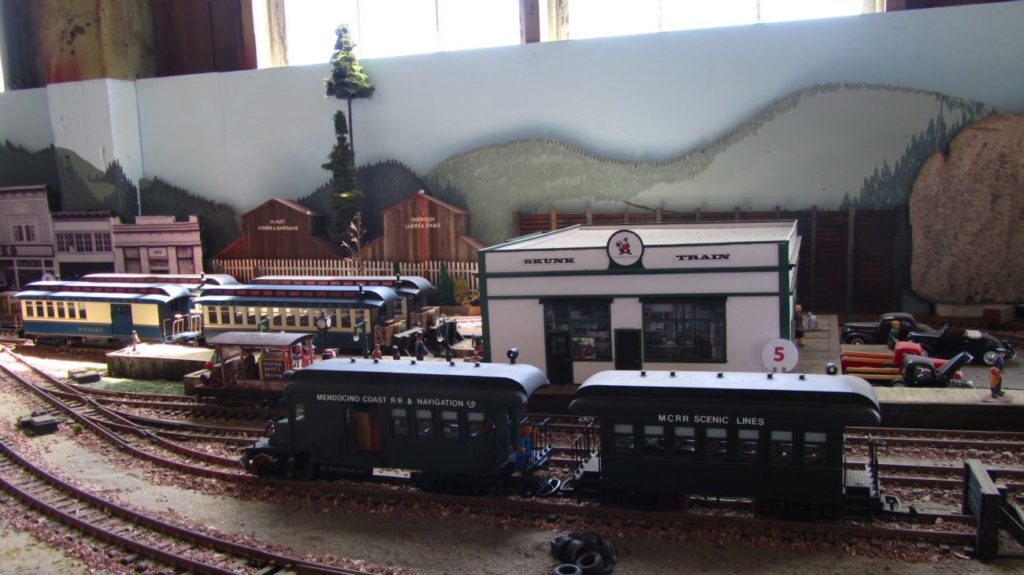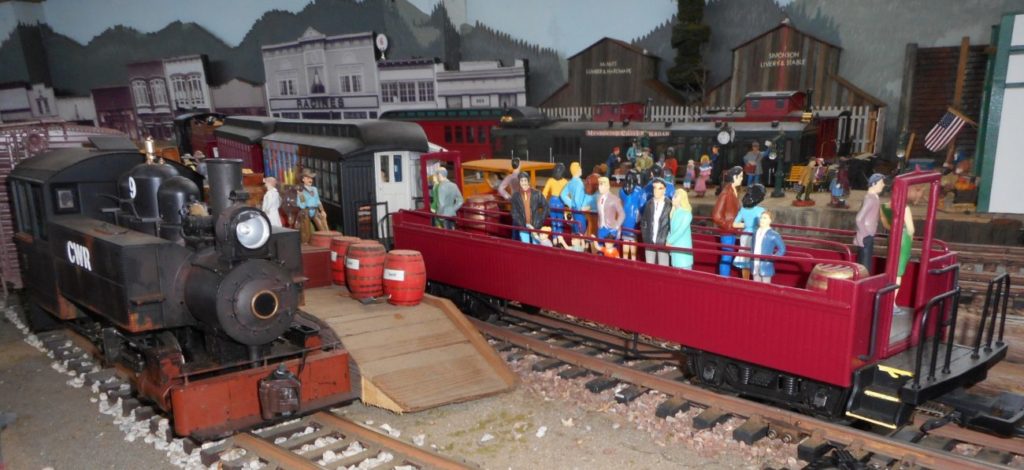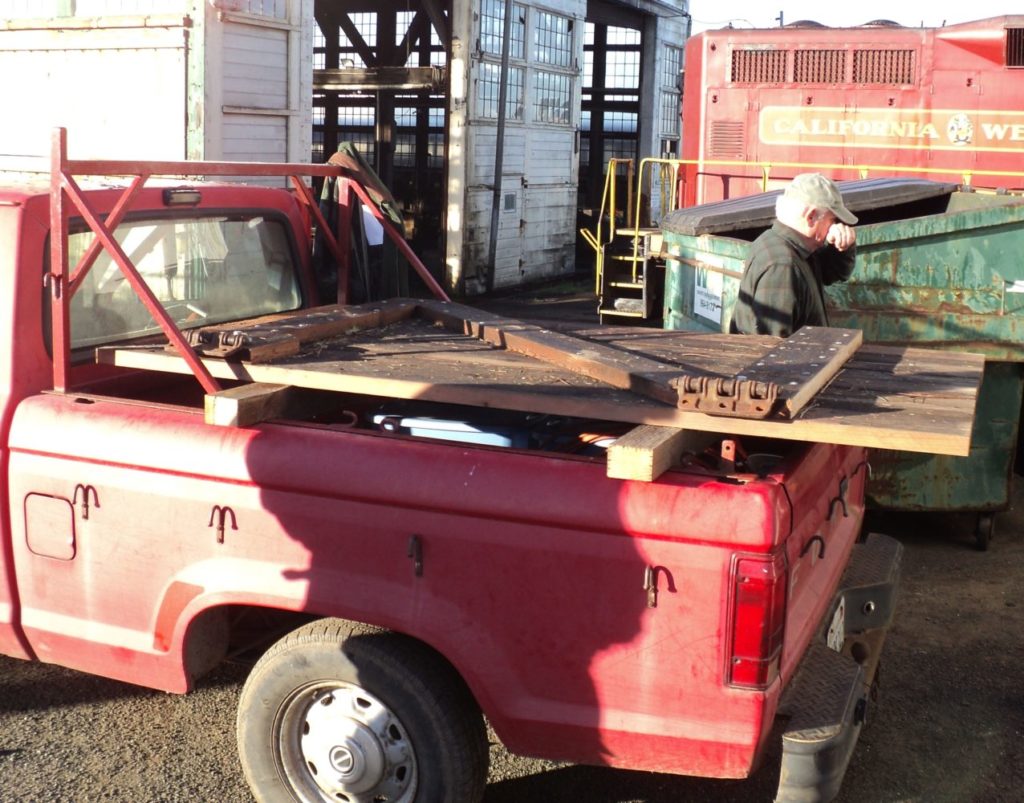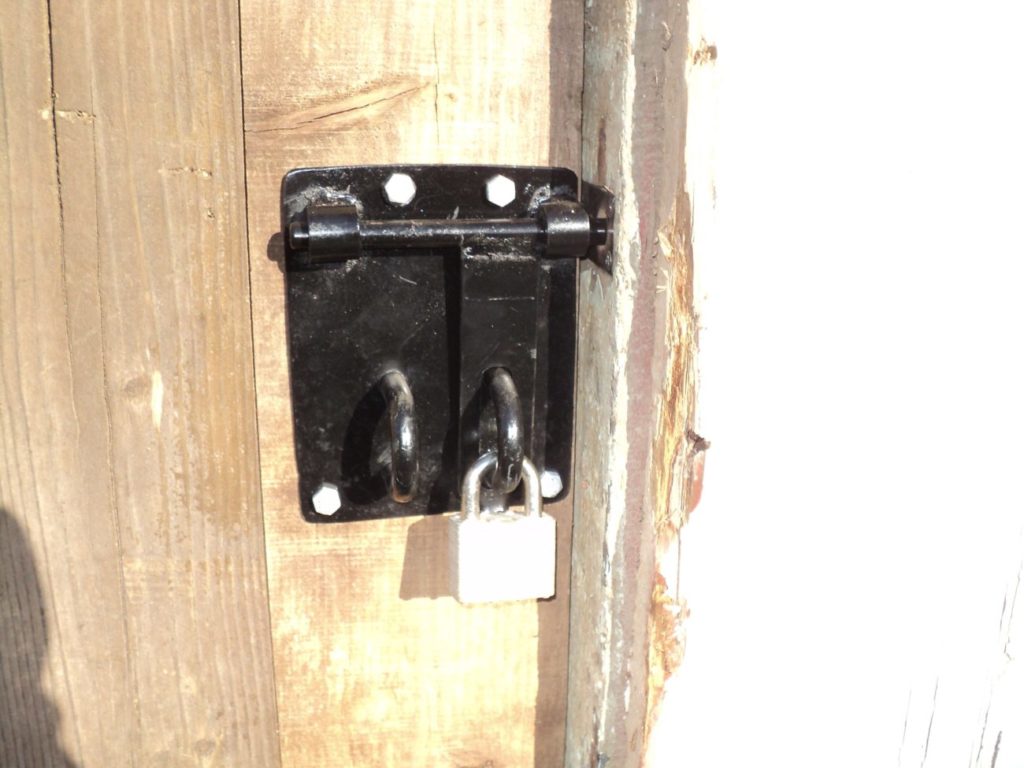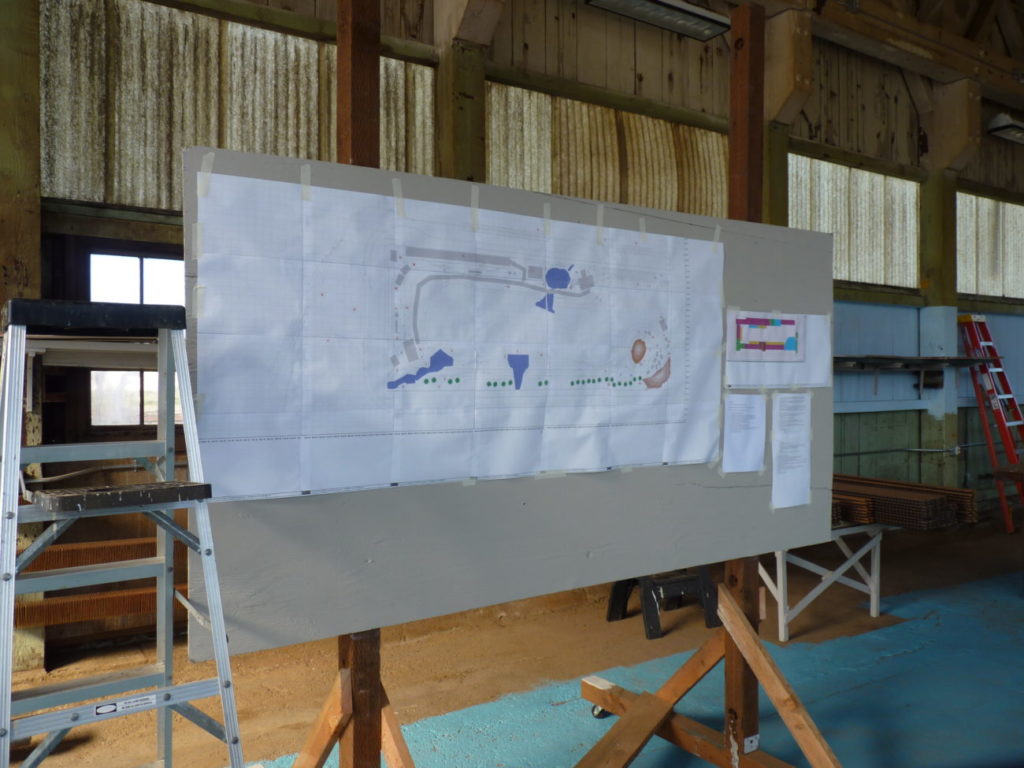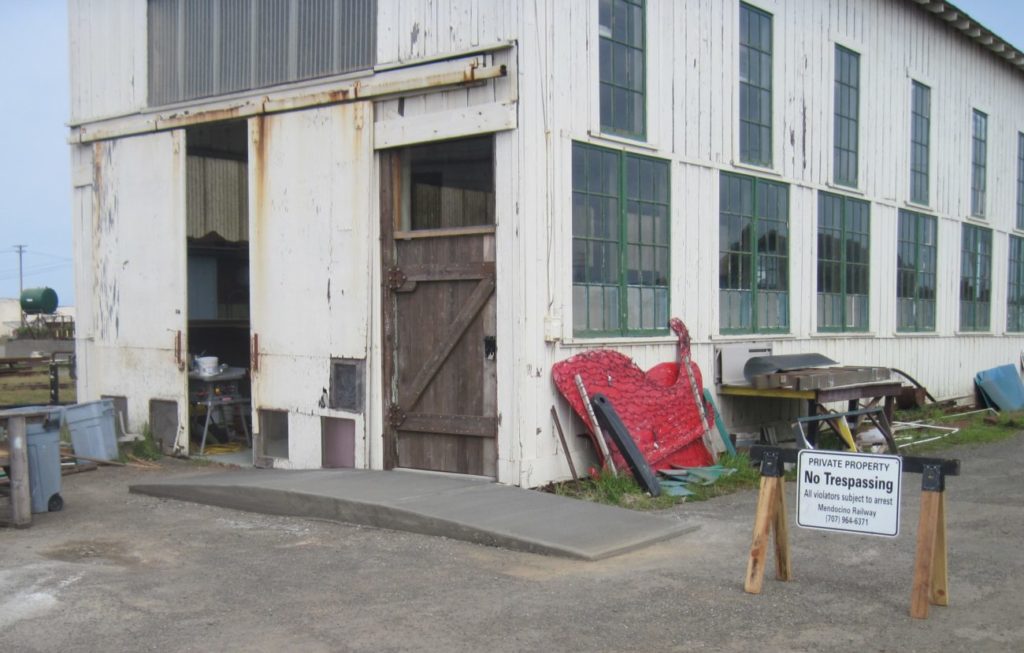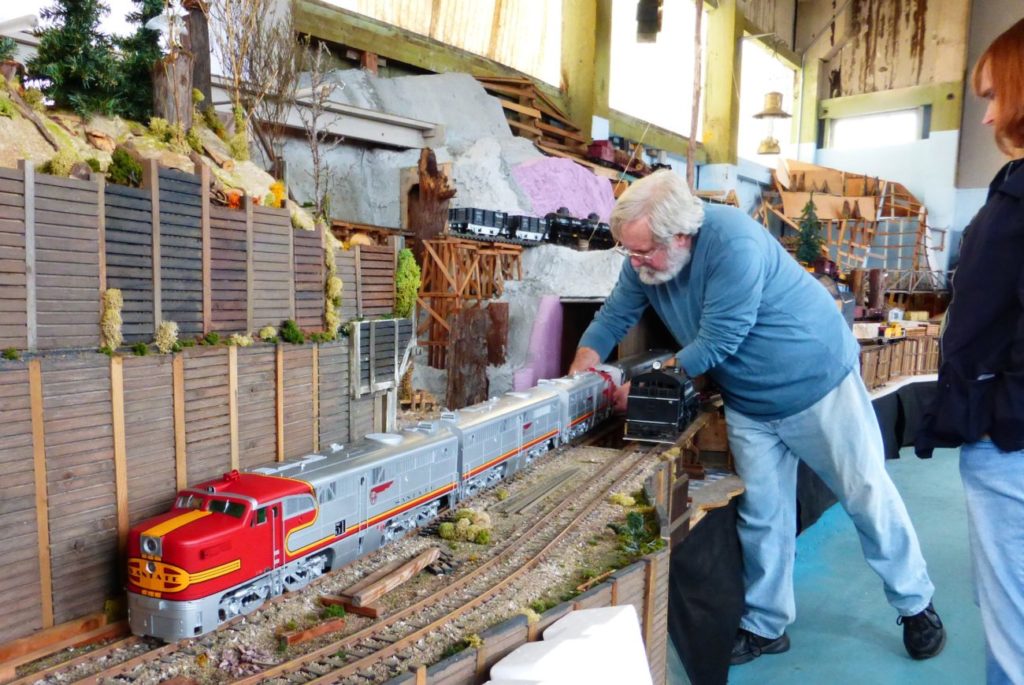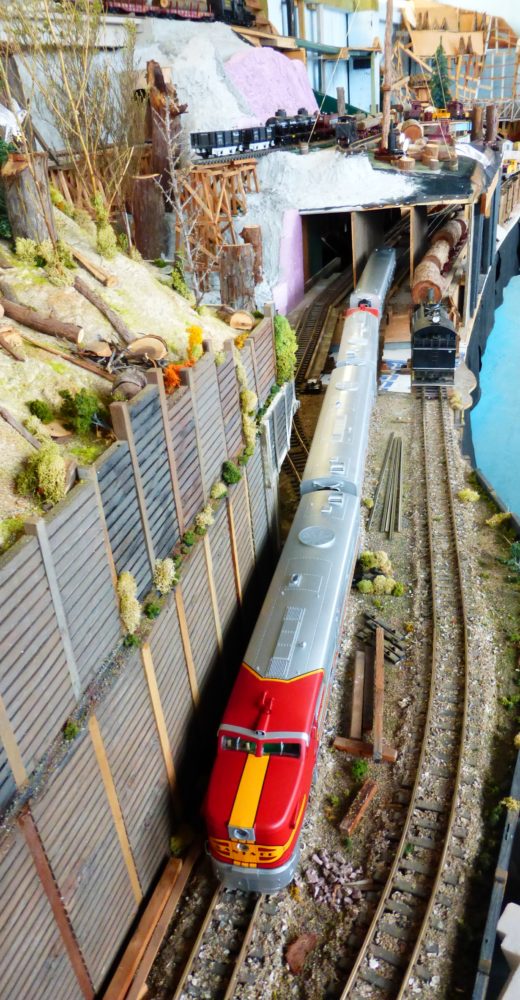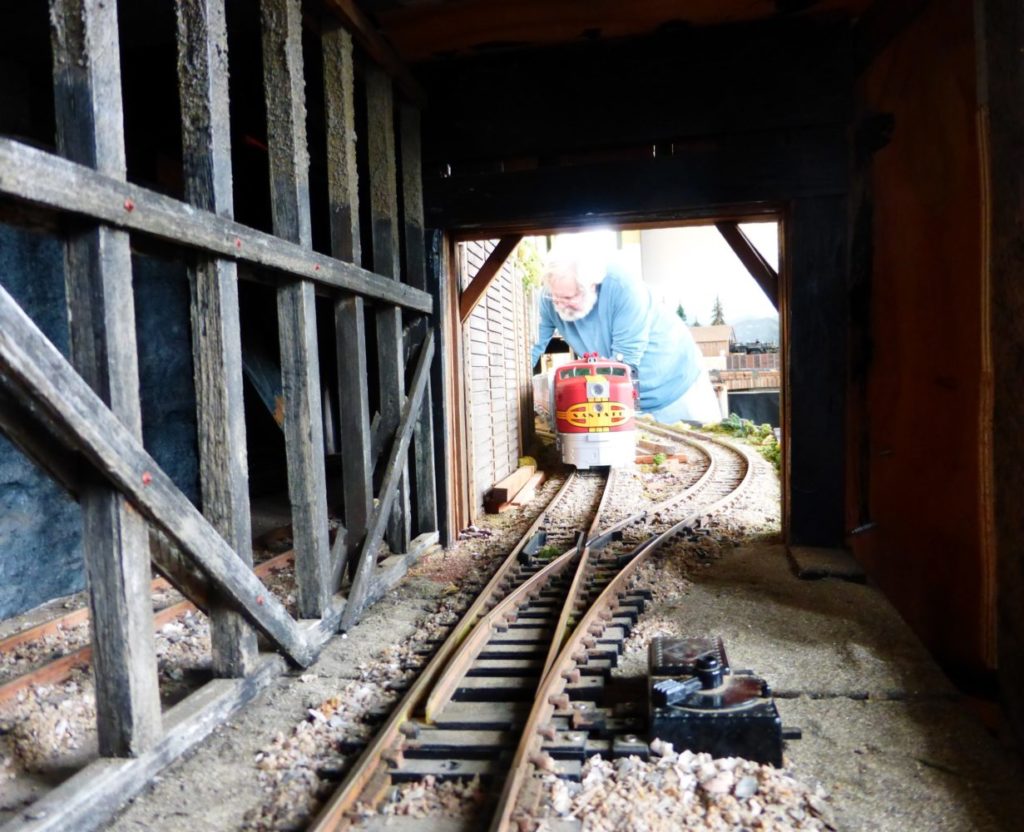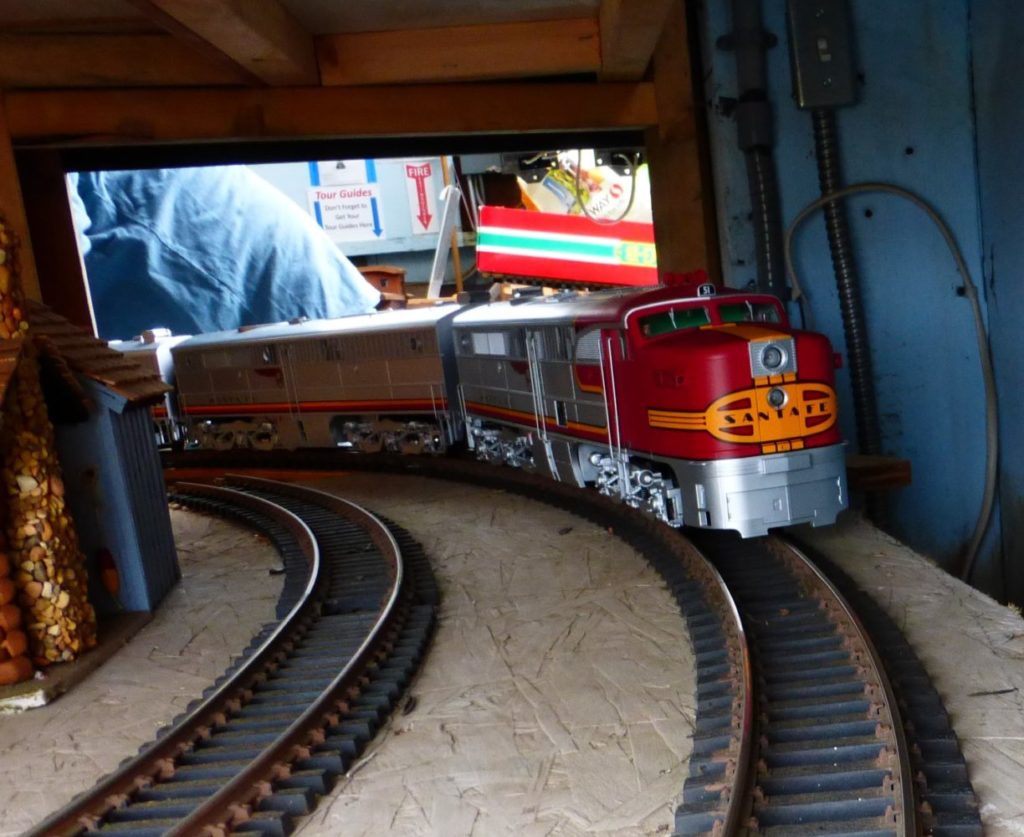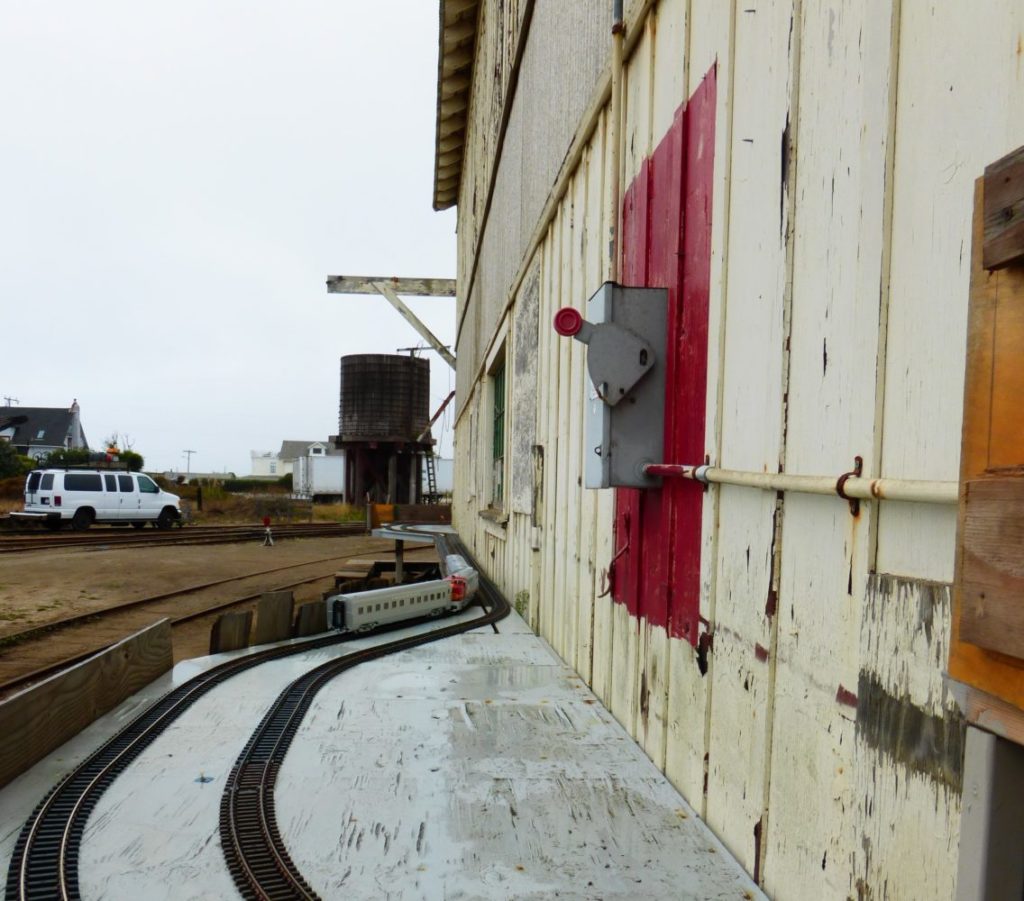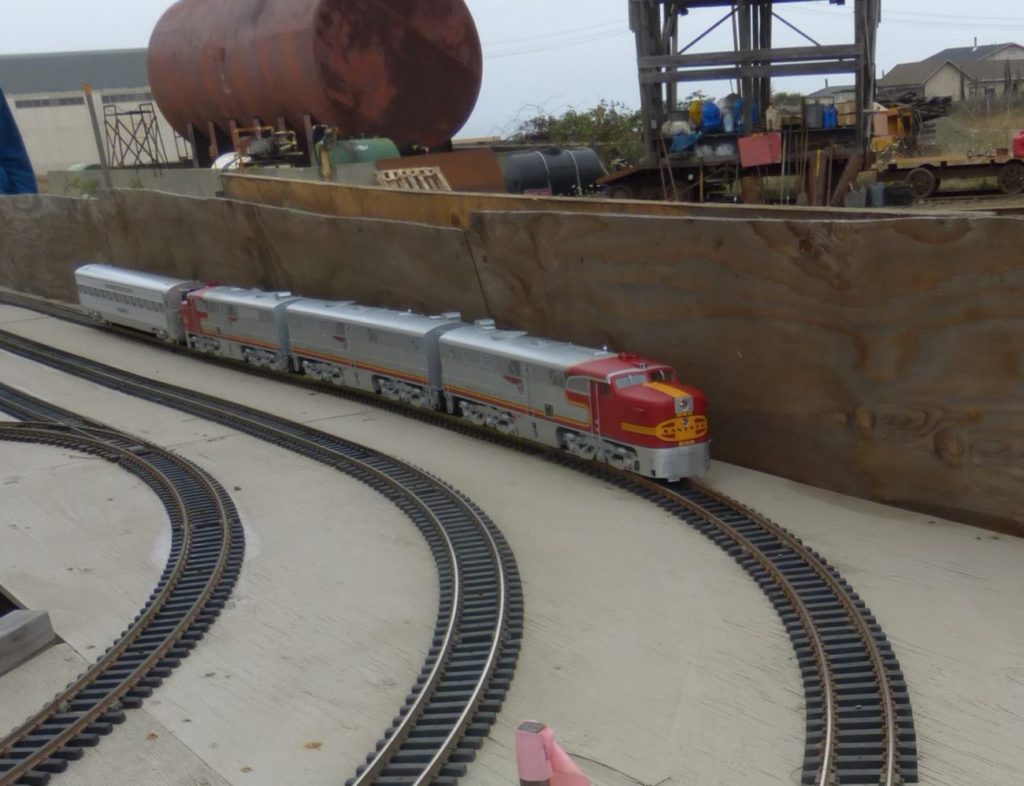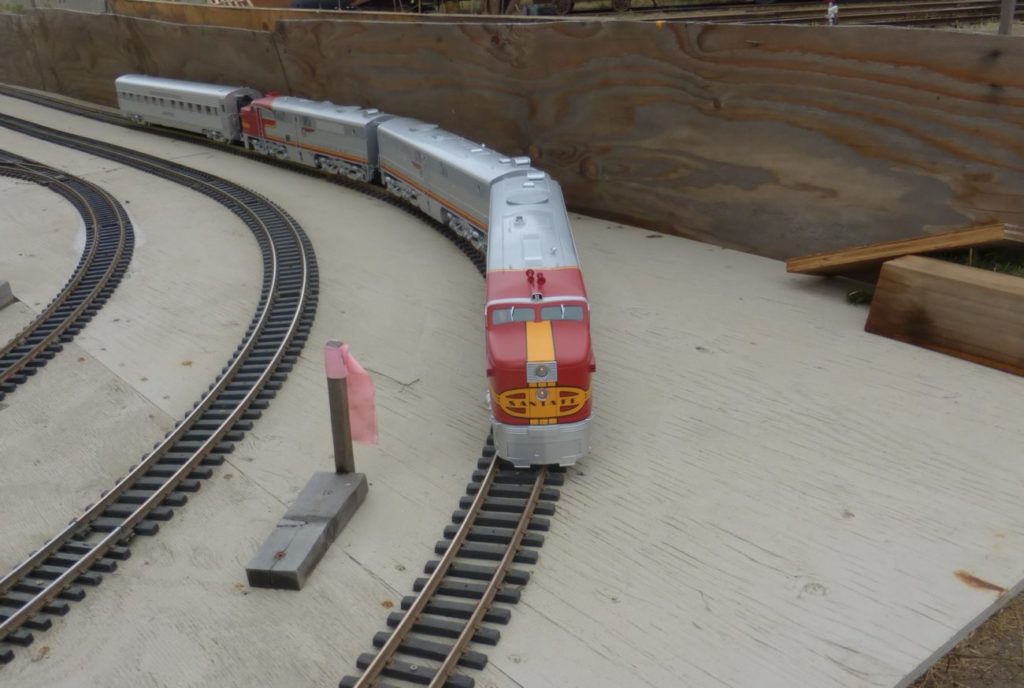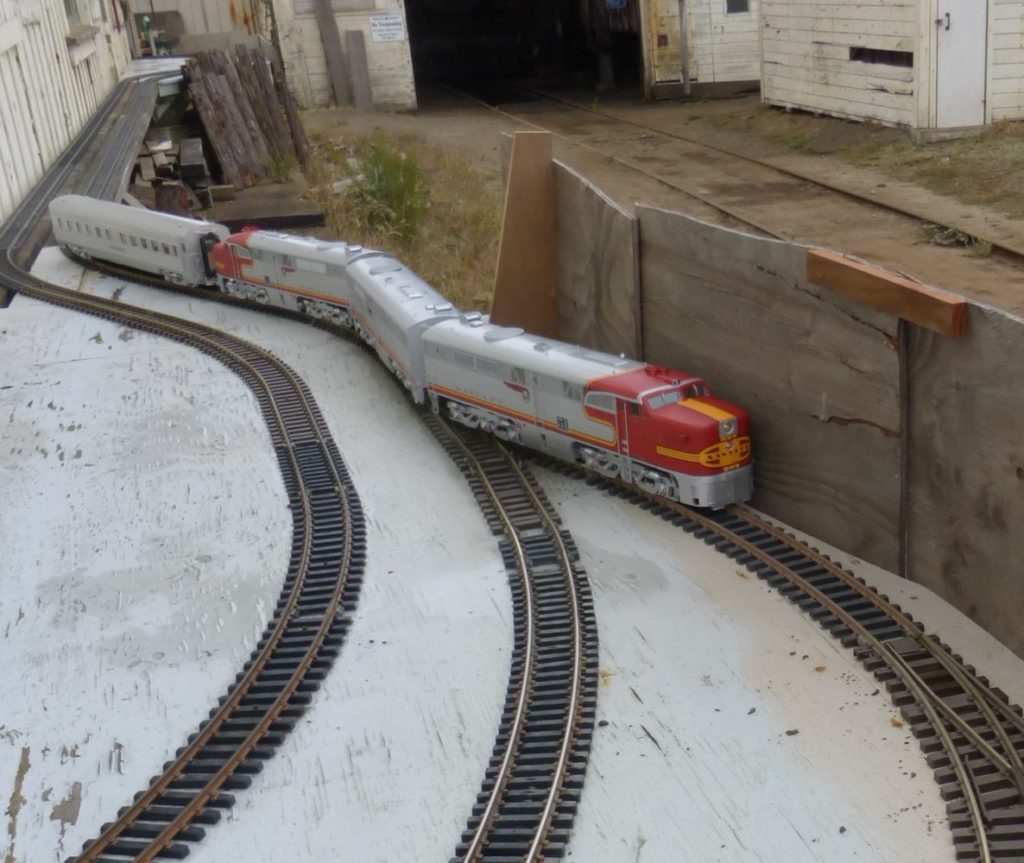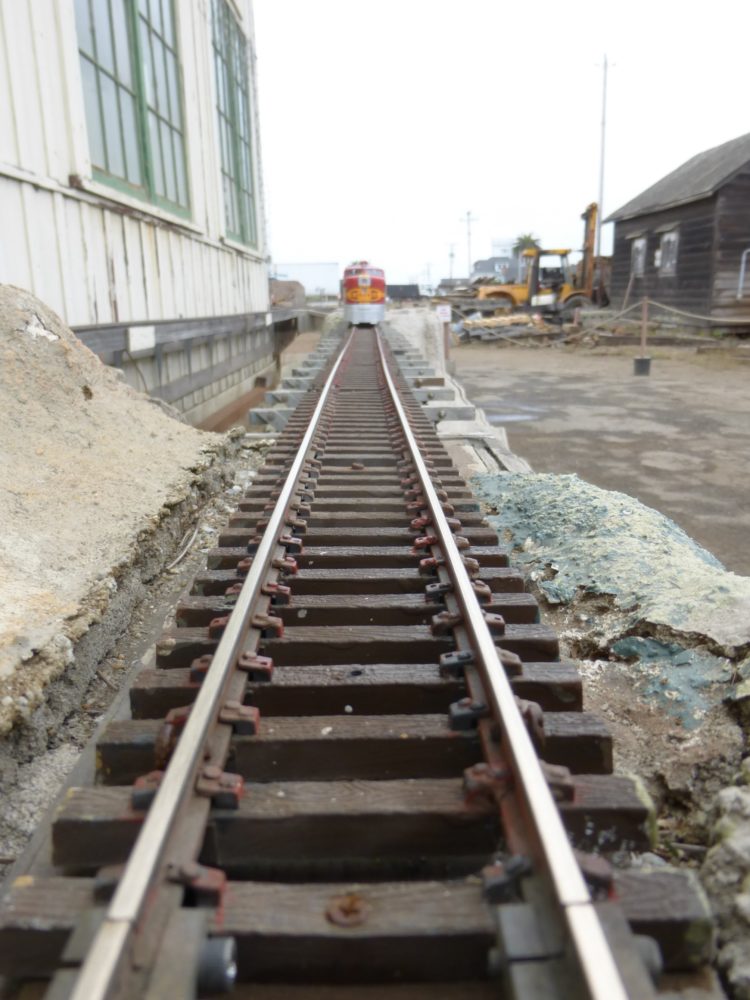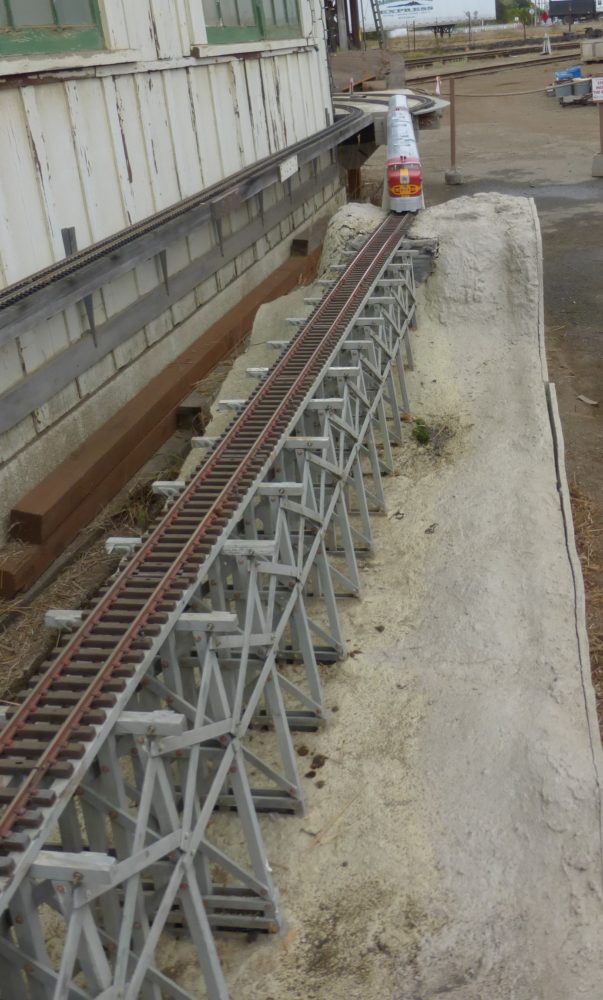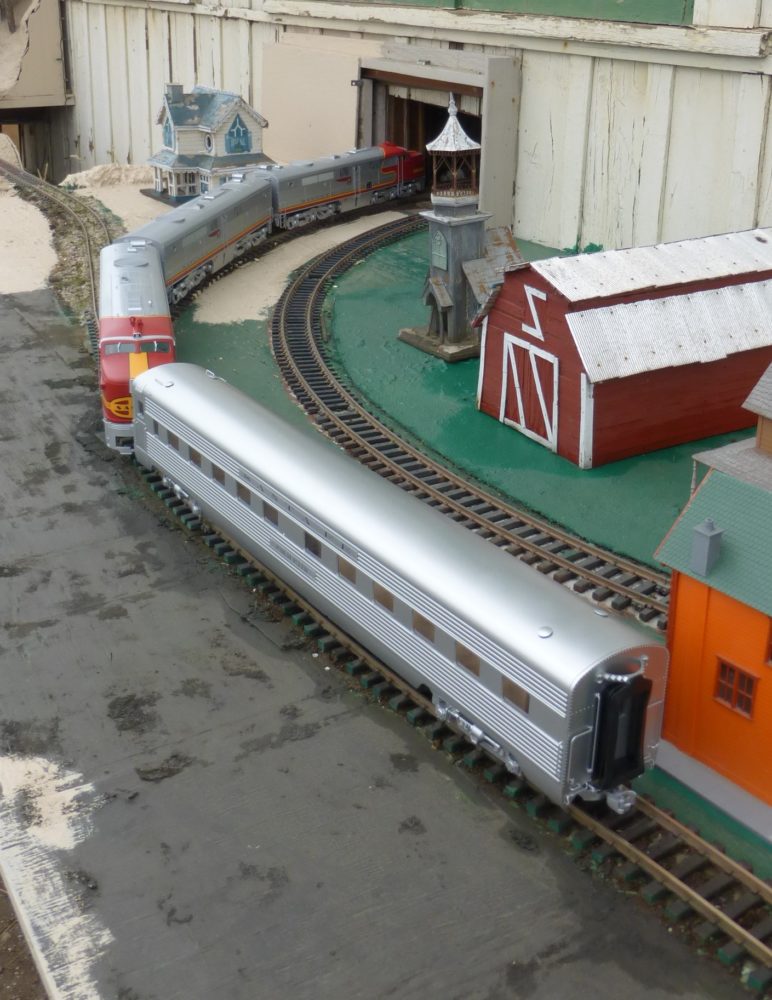When we started building our layout in 2011 we had little money. Club Members dug into their own pockets to supply locos, rolling stock and track. Ballast and ground cover were not high on the list of priorities.
There were many brainstorming sessions in the early days and someone came up with the idea of using pigeon grit and sawdust for ballast and ground cover. None of us had ever used either before. President Phil Miller dropped into the feed store and for a very modest price came up with a 5lb bag of grit. Sawdust was an easy “get”. Phil used the grit as ballast and we all agreed that whilst not perfect it was a heck of a lot better than nothing. Phil used white glue to “cement” the grit in place.
We sieved the sawdust using one of my wife’s sieves – she did get it back. It took several tries to come up with a “something” to hold it in place and make it look real. Our answer was to spread the sawdust on top of wood glue and then, when dry, us a pipette to drop on a mixture of green paint, water and Elmers glue. We agreed, again, that something was better than nothing. Have a look for yourself.
